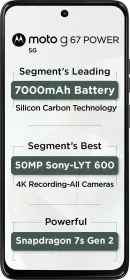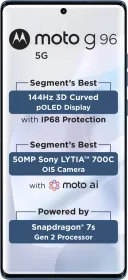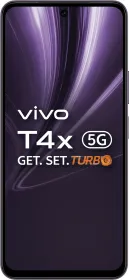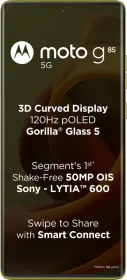The Toyota Hilux isn’t among the most-selling vehicles in India, but it’s certainly a hot topic among Toyota and pickup truck enthusiasts in the country. Its rugged build, reliable engine, and the lack of options in the Indian market all work in favor of the Hilux.
This is why, when the company announced the next-generation Hilux with an EV powertrain for the first time, it took the enthusiasts by storm. I was excited for the vehicle too, and some things immediately caught my eye, but then there are a few things that raise more questions than they answer.
So, without any further ado, let’s get started.
Also Read: Tata Sierra Engine & Entire Look Revealed Ahead Of Launch: Check Details Here
What I Like About The New Toyota Hilux
A Sleeker, Sharper, Contemporary Design

The first thing that you’ll notice about the new-generation Hilux is its design. The vehicle has been upgraded with contemporary cues, such as a sleeker LED headlight setup (with DRLs) on the front, a honeycomb-pattern grille on ICE models, two gigantic side air vents, and bold, chunky cladding at the bottom to make the pickup look even more aggressive.
On the EV version, the Hilux gets a closed-off front panel. It’s worth noting that different Hilux models feature different wheel sizes and cladding. Other than that, the side profile remains largely unchanged. The rear gate of the vehicle features vertically oriented tail-lamps, C-shaped LED DRLs, and the “TOYOTA” embossed on the rear gate.
Moreover, the vehicle’s exterior design, especially the front fascia, is intended to compete with contemporary models, and it succeeds. In my opinion, the front fascia might have a higher appeal among young buyers.
Introduction Of An EV Powertrain

Finally, Toyota is speeding up electrification in the pickup segment. For the first time, the company has equipped the Hilux with an electric powertrain featuring a 59.2 kWh battery. Interestingly, the battery pack is connected to both the front (205Nm) and rear (268.6Nm) motors, enabling true all-wheel-drive capability for the electric pickup.
The BEV version is based on the same IMV body-on-frame platform that underpins the rugged pickup, so there shouldn’t be any compromises in build quality or off-roading capability. The driving and handling dynamics could be slightly different due to the added weight of the battery, but the classic Hilux experience should remain similar.
For those wondering, the battery is placed below the rear seats.
Also Read: Maruti Suzuki e-Vitara EV Launching Dec 2: Range, Price & Specs
Revamped Interiors Loaded With Tech


While the changes on the outside might look minimal, Toyota has revamped the pickup’s cabin, making it more modern and feature-rich. First, there are two 12.3-inch screens proudly sitting atop the dashboard. Then there’s the redesigned center console, which features physical buttons (not touch controls) for the air conditioner, HVAC, AWD, and drive modes.
Then there’s the new three-spoke steering wheel with a rectangular central unit that also features the company’s lettering. You also get steering-mounted controls on either side. Additional features include a wireless charging pad, rear USB charging ports, connected car technology, and ventilated and powered front seats.
Safety That Matches Modern Standards

As part of the expanded Toyota Safety Sense ADAS Suite, the new Hilux gets plenty of safety features.
- Low Speed Acceleration Suppression: A system that prevents unintended acceleration at low speeds.
- Proactive Driving Assist: Helps in chaotic driving scenarios by avoiding collisions and assisting with lane changes.
- Emergency Driving Stop System: The feature can bring the Hilux to a controlled stop when it detects that the driver is incapacitated or not responding. The feature works in tandem with the driver monitor camera.
- Safe Exist Assist: Warns occupants and prevents them from exiting the vehicle into unsafe situations.
- Blind-Spot Monitoring: Monitors the driver’s blind spots and alerts about the vehicles in adjacent lanes.
- Pre-Collision System, Adaptive Cruise Control, Lane Departure, Lane Trace Assist, Road Sign Assist, Auto High Beam
The vehicle will also receive OTA updates, eliminating the need to visit dealerships or service centers to update crucial electronic and safety features. There’s a chance that not all these features will make their way to the Indian unit, but even so, they make the Hilux a safer pickup choice.
Also Read: A camouflaged SUV just got stuck in the snow: Which upcoming performance SUV could it be?
Toyota Performance And Reliability DNA Lives On
2.7-Liter Petrol
At the core of the Toyota experience are the automaker’s reliable engines. While the electric powertrain is a new addition to the vehicle, it continues to offer the 2.7-liter four-cylinder petrol engine, which produces 164 hp and 245 Nm.
This particular engine is available in select markets with a five-speed manual or a six-speed automatic transmission, available in both two-wheel-drive and four-wheel-drive configurations.
Hypothetically speaking, this particular engine, with the load of passengers and payload, won’t churn out decent mileage numbers when used with the E20 fuel that’s currently in distribution in the country.
2.8-Liter Diesel

In India, the new-generation Hilux should feature the 2.8-liter four-cylinder turbo-diesel engine, producing 204 PS and 420 Nm of torque (up to 500 Nm with the automatic gearbox). This particular engine is paired with a 6-speed manual or automatic transmission and a 4×4 drivetrain.
This could be a relatively more familiar option for buyers, especially those who have reservations about the pickup’s electric powertrain.
New Hydrogen-Cell-Based Powertrain
Joining the new-generation Hilux in 2028 will be a futuristic hydrogen fuel cell powertrain. The vehicle will use a polymer-electrolyte fuel cell (PEFC) stack, with a quoted power output of 174 hp in one specification set. The prototype stores the fuel cells in three high-pressure tanks, each with a capacity of ~2.6kg. Finally, the prototype was tested for a driving range of around 600 kilometers.
Also Read: Hyundai Venue First Impressions: Improvements All Around
What I Wish Were Better On The New Toyota Hilux
The Limitations Of The Hilux EV
The Hilux EV has a slightly reduced payload capacity (715kg vs. 1000kg) and towing capacity (1600kg vs. 3500kg). Last but not least, the Hilux EV’s claimed range (WLTP) is barely over 240 kilometers on a single charge. This could be a dealbreaker for buyers spending the kind of money on the premium, lifestyle pickup truck.
Pricing Could Be A Deal Breaker
Currently, the ex-showroom price of the Toyota Hilux ranges from Rs. 28 lakhs (STD variant) to Rs. 35 lakhs (High AT variant). Despite the company offering massive discounts on the pickup, it still remains priced above the most selling segment in India.
I’m a bit skeptical that the new-generation Hilux will maintain this pricing. If the company decides to bring the electric powertrain of the pickup to India, it could debut at a higher price, making it tough for it to compete with other aggressively priced EVs in the country.
Either way, discounts could help Toyota get some units onto the roads. For now, the Indian launch of the ninth-generation Hilux is under wraps, but we expect the vehicle to debut in India in the near future.
Also Read: 2025 Hyundai Venue: Which Is The Most Value-For-Money Variant For Petrol Buyers?

You can follow SmarYou can follow Smartprix on Twitter, Facebook, Instagram, and Google News. Visit smartprix.com for the latest tech and auto news, reviews, and guides.
tprix on Twitter, Facebook, Instagram, and Google News. Visit smartprix.com for the latest tech and auto news, reviews, and guides.
































